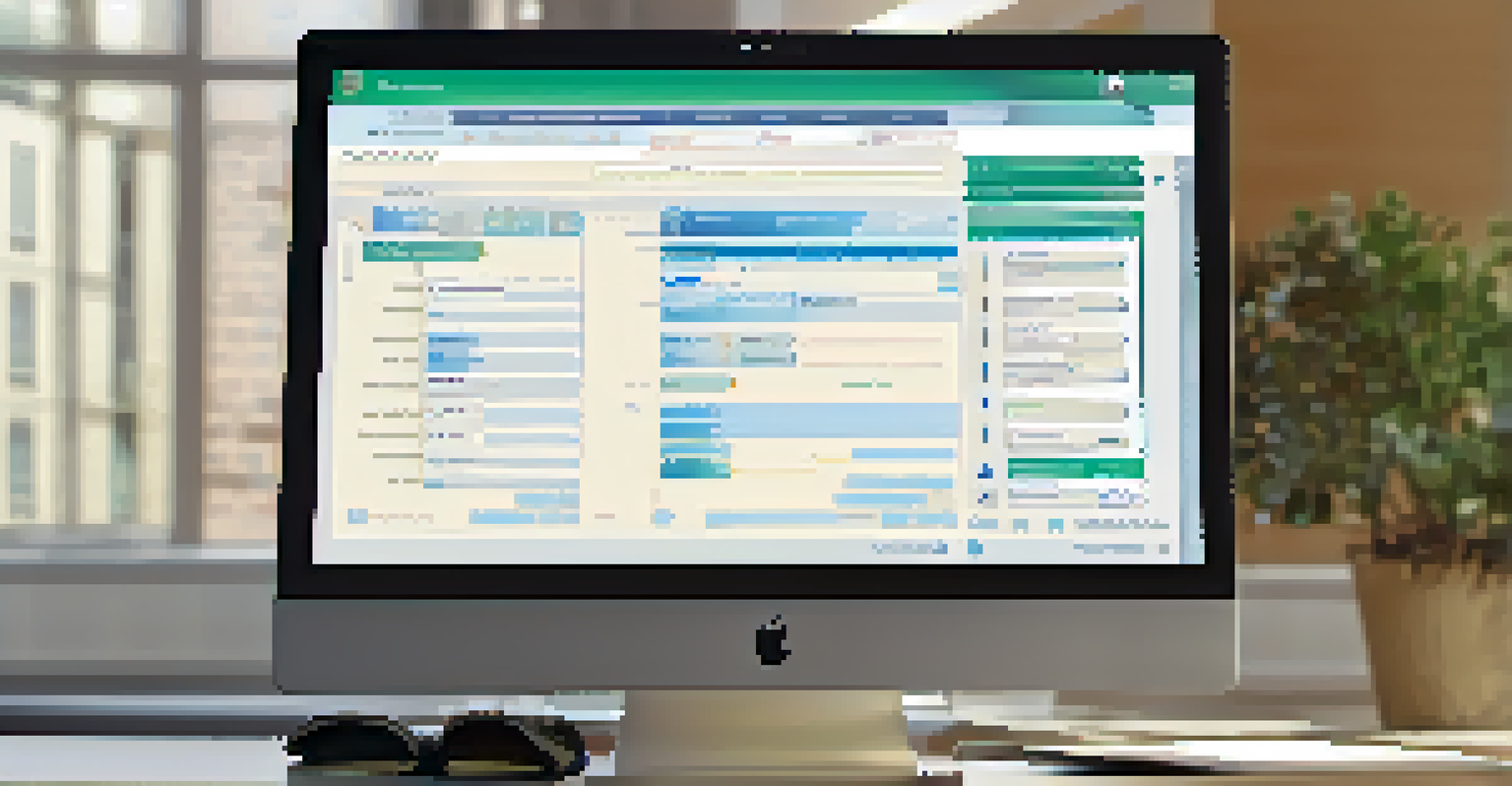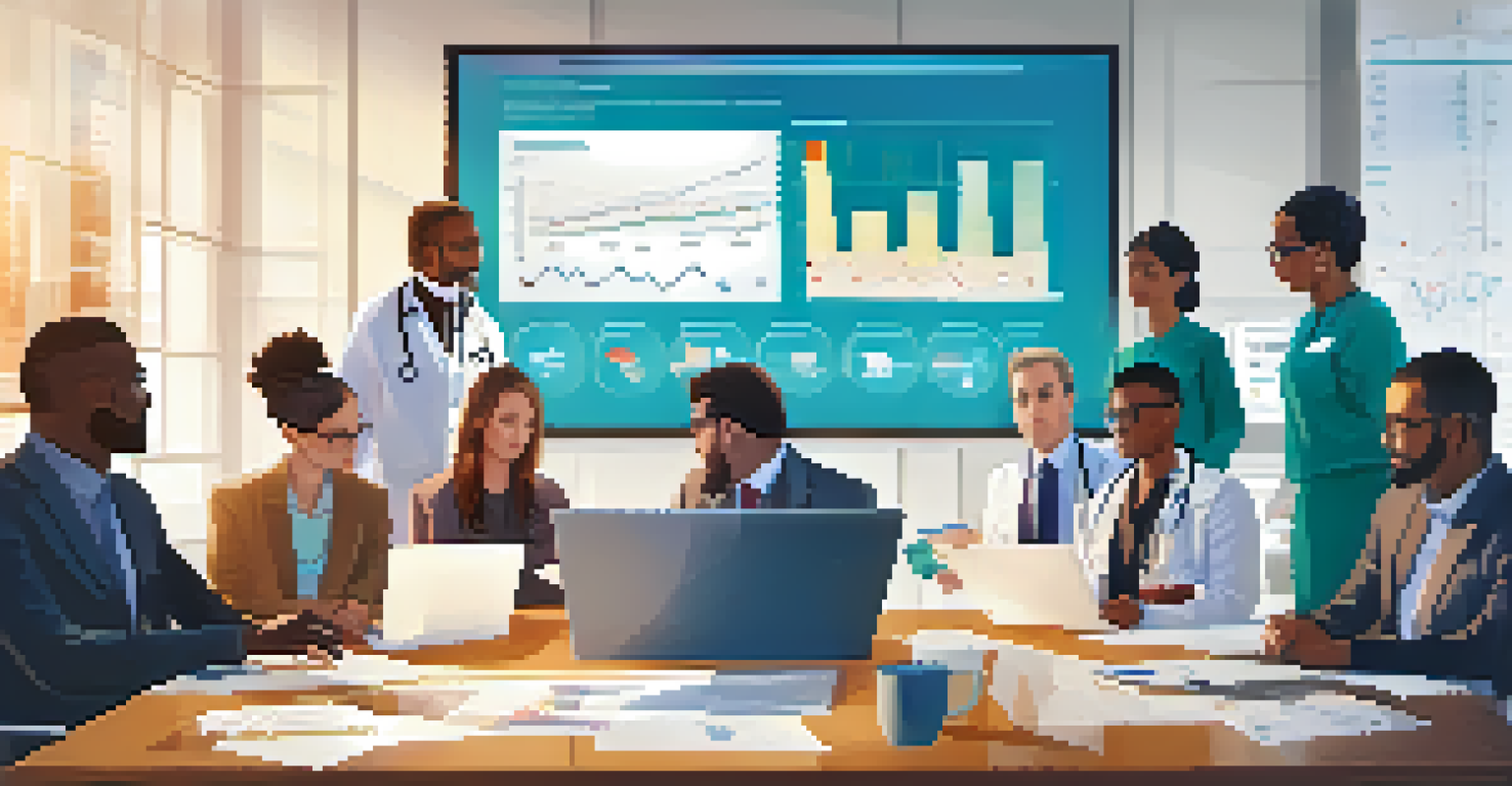Optimizing Workflow Efficiency with Electronic Health Records

Understanding Electronic Health Records (EHR)
Electronic Health Records, or EHRs, are digital versions of patients' paper charts. They contain comprehensive information about a patient's medical history, treatments, and diagnostic results, all accessible in one place. By transitioning from traditional paper records to EHRs, healthcare providers can enhance data accuracy and accessibility, which is crucial in today’s fast-paced medical environment.
The greatest medicine of all is teaching people how not to need it.
Imagine a world where a doctor can instantly pull up a patient's entire medical history with just a few clicks. That’s the power of EHRs—they allow for quick access to vital information, which saves time and improves patient care. This streamlined access can lead to more informed decision-making and better outcomes for patients.
However, adopting EHRs is not just about convenience. It’s also about optimizing workflow efficiency, which can significantly impact the healthcare delivery process. With EHRs, repetitive tasks can be minimized, and healthcare professionals can focus more on patient care rather than paperwork.
Streamlining Administrative Tasks with EHR
One of the most significant advantages of EHRs is their ability to streamline administrative tasks. Routine processes like scheduling appointments, billing, and managing medical records can all be automated or simplified through EHR systems. This means less time spent on paperwork and more time dedicated to patient interactions.

For example, instead of manually entering patient information for each appointment, EHRs allow healthcare providers to access and update patient records in real-time. This not only speeds up the administrative process but also reduces the chances of errors that can occur with manual entry. Imagine walking into a clinic where everything is organized and efficient; that’s what EHRs can help achieve.
EHRs Enhance Patient Care
Electronic Health Records streamline access to patient information, improving decision-making and outcomes.
Moreover, with features like automated reminders for follow-up appointments or medication refills, EHRs improve patient compliance and satisfaction. When administrative tasks are easily managed, the entire healthcare team can work more efficiently, leading to enhanced service delivery.
Improving Communication Among Healthcare Providers
Effective communication is essential in healthcare, and EHRs play a crucial role in facilitating this. They enable seamless sharing of patient information among different healthcare providers, ensuring that everyone involved in a patient's care is on the same page. This collaborative approach can significantly enhance the quality of care.
In the midst of every crisis, lies great opportunity.
Imagine a scenario where a patient visits multiple specialists. With EHRs, each provider can access the same comprehensive information about the patient’s history and treatments. This shared knowledge prevents duplicative tests and conflicting treatments, ultimately leading to a more cohesive healthcare experience.
Additionally, many EHR systems include messaging features that allow for real-time communication among providers. This instant connection can lead to quicker decision-making and more timely interventions, which are critical in acute care situations.
Enhancing Patient Engagement Through EHRs
EHRs are not just beneficial for healthcare providers; they also enhance patient engagement. Many EHR systems come with patient portals that allow individuals to access their own health information, schedule appointments, and communicate with their healthcare providers directly. This empowers patients to take an active role in their health management.
Imagine a patient who can view their lab results or medication lists online from the comfort of their home. This transparency fosters trust and encourages patients to ask questions and participate in their care. When patients are engaged, they are more likely to adhere to treatment plans and attend follow-up appointments.
Streamlined Administration Tasks
EHRs automate scheduling, billing, and medical record management, freeing up healthcare providers to focus on patient interactions.
Furthermore, EHRs can facilitate educational resources tailored to individual patients, helping them understand their conditions better. This personalized approach not only improves knowledge but also supports better health outcomes.
Data Analytics and Improved Decision-Making
One of the most powerful features of EHRs is their ability to collect and analyze vast amounts of patient data. This data can reveal trends, outcomes, and areas for improvement within healthcare practices. By leveraging analytics, providers can make more informed decisions that enhance patient care.
For example, EHRs can help identify patients at risk for certain conditions based on their medical history and demographics. This proactive approach enables healthcare providers to implement preventive measures, which can lead to better health outcomes and reduced healthcare costs. Think of it as having a crystal ball that helps predict and prevent future health issues.
Additionally, data analytics can assist healthcare organizations in monitoring performance metrics, ensuring that they meet quality standards. By continuously evaluating and improving their practices based on data-driven insights, providers can enhance their overall service quality.
Ensuring Compliance and Security with EHRs
In the healthcare industry, compliance with regulations such as HIPAA is paramount. EHRs are designed with security features that help protect patient data, ensuring that only authorized personnel have access to sensitive information. This not only ensures patient privacy but also builds trust in the healthcare system.
Consider the implications of a data breach—it can be detrimental to both the provider and the patient. EHR systems often include encryption, audit trails, and access controls that safeguard against unauthorized access. This is akin to having a digital vault that keeps valuable information secure.
Boosted Communication in Healthcare
EHRs facilitate seamless sharing of patient data among providers, ensuring coordinated and cohesive care.
Moreover, EHRs facilitate easier compliance reporting, streamlining the process for healthcare providers. With automated tracking and reporting features, organizations can maintain compliance with less effort, allowing them to focus more on patient care rather than regulatory paperwork.
Challenges and Solutions in EHR Implementation
While the advantages of EHRs are substantial, implementing these systems is not without challenges. Common hurdles include resistance to change among staff, high costs, and the complexity of transitioning from paper to digital records. It's essential for healthcare organizations to acknowledge these challenges upfront.
For instance, providing adequate training to staff can alleviate concerns about using new technology. Engaging employees early in the process and addressing their concerns can foster a more positive transition. Picture a team of healthcare providers equipped with the right tools and knowledge—it leads to greater efficiency and improved morale.

Additionally, selecting an EHR system that aligns with the specific needs of the organization can mitigate some of the implementation issues. By investing time in research and involving key stakeholders in the decision-making process, healthcare providers can ensure a smoother transition and maximize the benefits of their EHR investment.